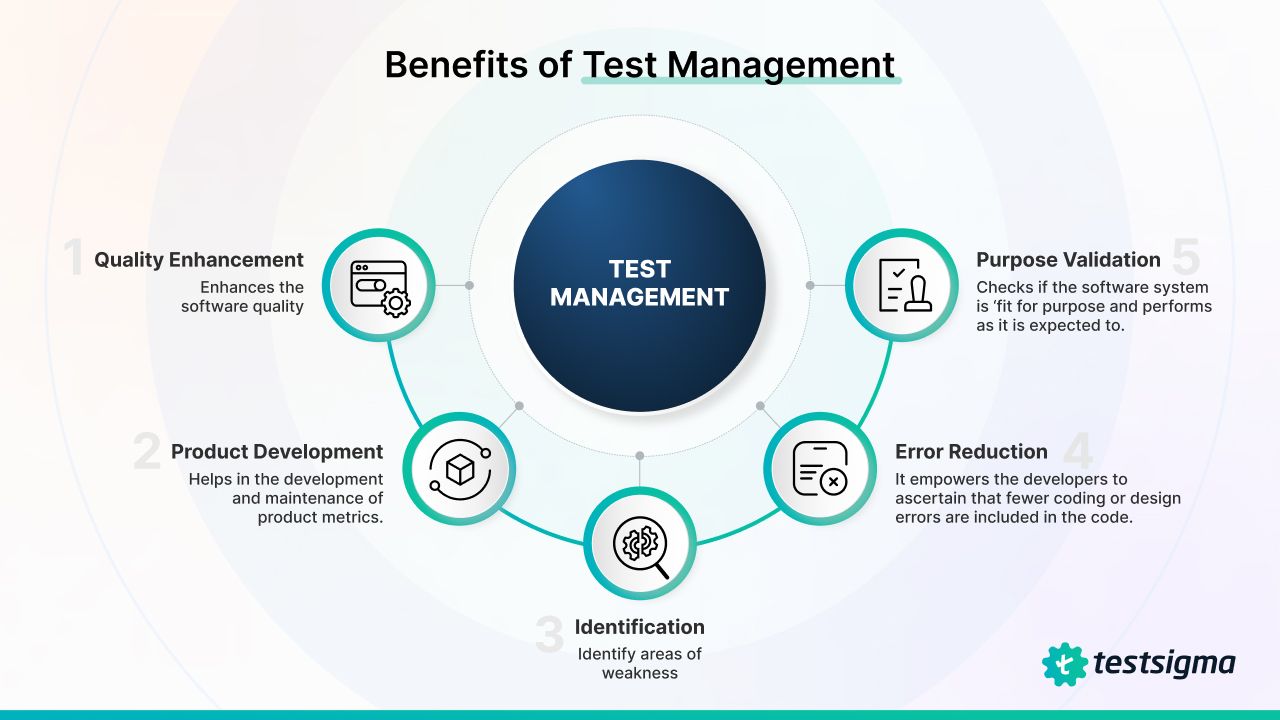Between tight deadlines, multiple releases, and scattered communication, managing QA (Quality Assurance) can feel like chaos. Whether you’re leading a small testing team or coordinating enterprise-level QA, staying organised is crucial to ensuring product quality. This is where test management tools come into play; they turn testing chaos into a well-structured, traceable process.
The Growing Complexity of QA
Modern software development moves fast. Agile and DevOps have accelerated release cycles, but they’ve also increased the pressure on QA teams. You’re expected to deliver high-quality results quickly, often with limited time and overlapping sprints.
Without a clear test management plan, we can all too easily get slowed down in test cases, redundant work, or miss important defects. Miscommunication between developers and testers can then fuel the flames and become fuzzy priorities and muddled reporting.
That's where smart QA managers come in and bring the right processes and tools to get their testing back on track.
Why Traditional Methods Fall Short
Manual tracking and spreadsheets work for small teams, but as projects grow, they become ineffective for managing them. You can find yourself struggling with:
● Zero or zero traceability between test cases, defects, and requirements
● Not being able to gain insight into the effort being expended on testing
● Difficulty in dealing with large regression suites
● Wasted time in manual reporting
In short, conventional methods aren't suitable to cope with speed and complexity within today's development settings. Test management needs to change.
The Role of Test Management Tools in Today's QA
Test management tools bring structure, traceability, and collaboration to QA. They let you organise, manage, and schedule testing activity with ease, all from a single integrated platform.
This is what they typically enable:
● Centralised Repository for Test Cases: Store and keep test cases in a retrievable and reusable manner.
● Traceability: Link requirements, test cases, and bugs to provide end-to-end visibility.
● Collaboration: Enable developers, testers, and managers to communicate easily.
● Automation Integration: Easily integrate with automation tools and CI/CD pipelines to enable continuous testing.
● Reporting and Analytics: Monitor test coverage, defect density, and release readiness in real-time.
In effect, these tools give you a sense of where you are and the ability to make a good choice.
Choosing the Right Test Management Tools
Not every tool works with every team. The right one will be yours based on your integration, process, and project size needs. Some QA teams prefer stand-alone tools, but other teams use Test management tools for Jira so that testing can still be part of their project management setup.
When selecting options, remember:
● Integration features: Does it connect with your CI/CD pipelines, automation frameworks, or issue trackers?
● Ease of use: How user-friendly is it for your testers and developers to get up to speed on?
● Scalability: Will it scale with your team and project needs?
● Reporting: Does it have dashboards that just report on progress and bottlenecks?
● Cost and support: Is it cost-effective and well supported?
The ideal tool will not only reduce mess but also make visibility and accountability of your QA process more feasible.
Top 3 Test Management Tools Worth Checking Out
Despite the many options available in the market, the following three have stood the test of time for the teams that are looking to automate their QA process.
Testsigma
Testsigma has an end-to-end testing platform for manual as well as automated testing. For today's agile teams, it will help you with test case management, planning for execution, and real-time results monitoring. Its no-code automation allows technical as well as non-technical users to utilise it.
You can author and execute your entire test life cycle, from requirements to release, from one place. Integrations of CI/CD pipeline and collaboration tools make QA an integral part of your development process. Testsigma is particularly valuable to teams that need high velocity without compromising on quality.
Xray
Xray is used extensively by teams that use test management tools for Jira. Xray integrates with Jira out of the box so that you can run automated and manual tests in parallel to issues and user stories. Its traceability reports give you insights into coverage and progress throughout sprints at your fingertips.
Supported by an automation framework and continuous integration, Xray enables ease of tracking release readiness and guarantees all requirements are tested before deployment.
Zephyr Scale
Zephyr Scale is another powerful test management tool that natively runs on Jira. It has formal test planning, test run monitoring, and reporting, all natively on Jira. Easy use and native dashboards make it a team favourite, in addition to support for vast test repositories.
It's for large business companies already committed to Jira and would like to keep their project as well as test management in the same basket.
Implementing Test Management Tools for Jira: A Smart Integration Solution
If your project team is already on Jira, implementing your testing process into it can be a significant edge. With test management tools for Jira, you can:
● Connect requirements and defects directly to test cases
● View test progress as part of the current Jira dashboards
● Cut time spent switching between multiple tools
● Increase collaboration for developers and QA teams
This type of integration provides transparency across the entire software life cycle. Your whole team, developers and product owners alike, can see the test status in real time. It makes you accountable, traceable, and on time as a QA manager.
Maintaining QA in Top Shape: Managerial Best Practices
Dumb tools don't replace dumb management. To get your QA to actually do some work:
● Plan Early: Involves QA from the requirement-gathering stage to prevent late-cycle defects.
● Prioritise Tests: Prioritise first high-risk and business-critical segments.
● Automate Strategically: Automate nothing; automate high-value and repeated tests.
● Monitor Metrics: Keep dashboards to track defect patterns and execution rates.
● Encourage Collaboration: Keep open communication channels between QA, Dev, and Product teams.
By closing these practices with good test management tools, you can shift testing from being a response to a strategic practice that can lead to improved software quality.
Conclusion
Quality assurance does not need to be crazy. Good test management tools, process definition, and leadership can bring light to darkness and keep your testing on track.
It might be with stand-alone tools or test management tools for Jira, the solution is visibility, traceability, and co-operation. Intelligent QA managers understand control is not merely about being able to meet deadlines; it's about instilling confidence in every release.






